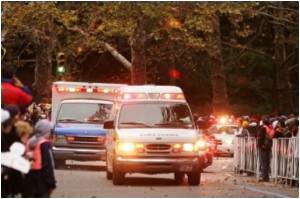
The authors state, "Of interest, only 5 of 71 ambulances tested positive for MRSA in at least one location (yielding the 12 MRSA isolates studied). Although there have been few previous studies of front-line advanced life support ambulances, a higher frequency of suspected MRSA in ambulance fleets has been reported previously."
"These results indicate that first responders are doing a good job of protecting their patients," adds James Rago, PhD, lead study author and assistant professor of biology at Lewis University. "The research is significant because improper cleaning of these surfaces could be a cause for concern due to the frequency with which emergency medical technicians may touch infected surfaces during patient care, the prevalence of open wounds among burn victims, and the fact that these patients go directly to the hospital where they come in contact with patients with compromised immune systems who are vulnerable to infections."
The authors conclude, "Given the ease with which S. aureus can survive on inanimate surfaces and exchange antibiotic resistance elements, a conscientious approach to the application of existing cleaning techniques, especially in key ambulance sites, needs to continue."
Source-Eurekalert











